This month marks the ten-year anniversary of the 7.0 magnitude earthquake that devastated Haiti. The epicenter was near the nation’s capital, Port-au-Prince, home to 3 million. The January 12 quake wreaked havoc, becoming one of the largest natural disasters in human history. The Haitian government estimated that as many as 300,000 died, hundreds of thousands were injured, and more than one million were rendered homeless as more than 250,000 buildings collapsed. The region’s infrastructure—power, transportation, communication, healthcare and education systems—suffered severe damage and destruction.
Scores of nations and millions of people worldwide responded with aid and support. In the first few days and nights before U.S. troops arrived to clear the way for and deliver desperately needed humanitarian assistance, Haitians had to survive. Most were afraid of returning to their damaged homes and fragile buildings because of possible aftershocks. Instead they took refuge on the streets and in public parks and squares surrounded by unimaginable piles of rubble and coated by the ubiquitous fog of pulverized concrete that hung in the air. Getting through the shock of the quake, and seeing their loved ones die and possessions destroyed, they needed to draw deeply on their inner and collective strength. In the face of despair, they found strength in song. Hundreds of thousands sang through the night—anthems and hymns and songs of resilience and hope. The songs, deeply rooted in Haitian culture and history, were expressions of their very identity as a people and community, rallying their spirits, and buttressing their courage despite the lack of food, medical care and shelter.
It was an unbelievable evocation of humanity in the face of unimaginable catastrophe. One could not but admire the Haitian peoples’ will, tenacity and reservoir of collective experience. Thinking of material needs, we often forget how important culture, religion, identity and basic beliefs forged through a people’s history are in their surviving a disaster. People don’t forget their culture in such a time of need, instead they take refuge in it—praying harder, singing louder, holding on tighter to each other.
The importance of culture in surviving the earthquake and eventually recovering from it was made clear to me and others at the Smithsonian Institution as our fellow Haitian colleagues responded in the first few days. Patrick Vilaire, a sculptor and grassroots cultural heritage worker, rescued books and artifacts in the rubble. Parents and teachers rushed to the devastated Holy Trinity Episcopal Cathedral to recover musical instruments precious to their children from the teetering music school building. Artists from the Centre d’Art pulled paintings out of their pancaked building in order to save decades of Haitian artistic creativity.
Patrick Delatour, the minister of tourism and historical architect, was appointed by Haitian president Rene Preval to lead the recovery planning effort. Patrick had been a fellow at the Smithsonian in the 1980s, and in 2004 was part of a team of Haitian cultural leaders who organized and curated a program at the Smithsonian Folklife Festival marking the 200th anniversary of Haitian independence—when the Haitians defeated Napoleon’s army, became an independent nation and abolished slavery. Among that team was Geri Benoit, former first lady of Haiti; Olsen Jean-Julien, more recently Haiti’s minister of culture; Vilaire; and others who played supportive roles, including Georges Nader, leader of Haiti’s largest museum and art gallery; Michelle Pierre-Louis, head of Fokal, Haiti’s largest cultural and educational foundation and more recently Haiti’s prime minister.
Delatour told me we needed something like the “Monuments Men,” the famed division of the U.S. Army that rescued the cultural treasures of Europe from Nazi destruction in World War II. The Smithsonian wanted to help our Haitian colleagues, but neither we nor any other organization had the template or funds to do so.
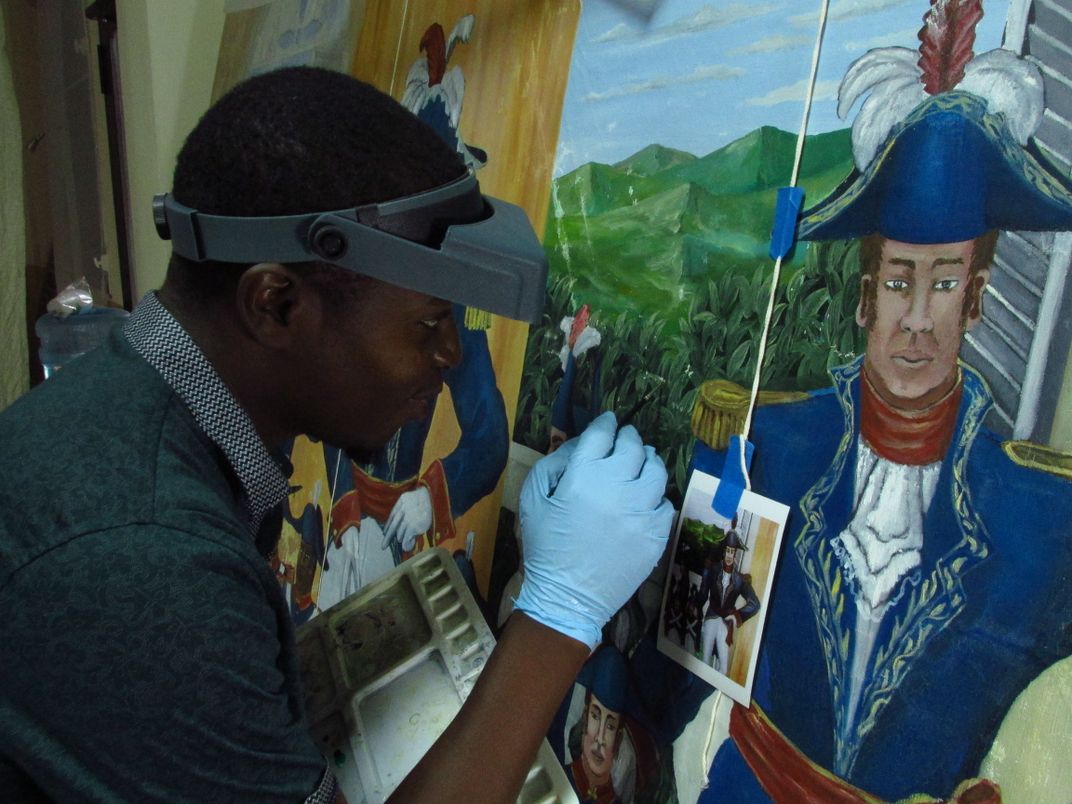
We were, though, inspired by the cultural rescue work of the U.S. Committee of the Blue Shield, led by its founder, Cori Wegener—who had served as a U.S. Army civil affairs officer and “Monuments Woman” after the 2003 invasion of Iraq and helped restore the Baghdad museum, and the American Institute of Conservation, led by Eryl Wentworth, which in the wake of Hurricane Katrina, had trained about 100 conservators in disaster response. Their expertise helped guide our plans for Haiti. In collaboration with the Haitian government, institutions, and cultural leaders, we mobilized. Along with the U.S. President’s Committee for the Arts and Humanities, the Department of State and USAID, the Department of Defense, the Institute for Museum and Library Services, the National Endowment for the Arts, the National Endowment for the Humanities and others, we initiated the Haitian Cultural Recovery Project. Thanks to producer Margo Lion, crucial funding came from The Broadway League, New York theater owners who understood from their experience of our great disaster—9/11—how important culture was to the spiritual and material recovery of a nation.
Immediately we launched a drive to send paints, canvasses and brushes to Haiti’s Nader Gallery to be distributed to Haitian artists, so they could “paint the earthquake” and the aftermath. Our Haitian Cultural Recovery Project established a base of operations in a former UN building and compound in Port-au-Prince. Kaywin Feldmen, then head of the Minneapolis Institute of Art, agreed to detail Wegener to the Smithsonian to help guide the project. We hired a staff of about three dozen Haitians led by Jean-Julian and Smithsonian retired conservator Stephanie Hornbeck. We acquired generators, vehicles and equipment, established conservation labs, and hosted more than 120 conservators and cultural experts from the Smithsonian, and thanks to the American Institute for Conservation, from numerous American institutions such as Yale, the Seattle Art Museum, the Maryland State Archives, and others, as well as international organizations including the International Center for the Study of the Preservation and Restoration of Cultural Property (ICCROM) and UNESCO. We organized an exhibition of Haitian children’s earthquake art at the Smithsonian, mounted exhibits of Haitian art at several galleries, and hosted Haitian musicians and craftspeople at the Smithsonian Folklife Festival.
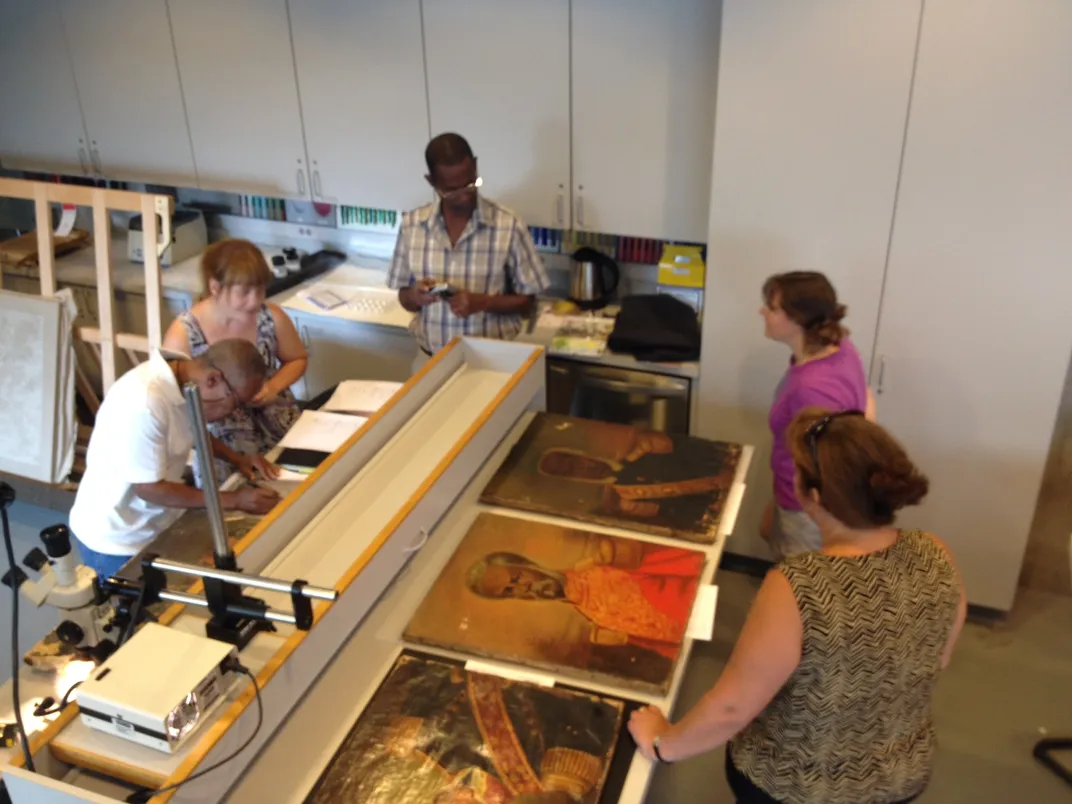
After two years of work, we’d trained more than 100 Haitians from more than 30 museums, galleries, libraries and archives in basic conservation, saved more than 35,000 paintings, sculptures, artifacts, rare books, murals, archives and other Haitian treasures. We built and improved collection storage facilities at MUPANAH—the national history museum of Haiti, the national library and archives, Holy Trinity Cathedral, the Centre d’Art, ISPAN—the national cultural heritage preservation organization, and other cultural venues. We’d also restored some key works for the Presidential Palace, the Nader Gallery, the Centre d’Art and other institutions. With Yale University’s conservation center, we’d run an advanced internship program, and with help from the Stiller Foundation and USAID, we’d established and built a Cultural Conservation Center at Haiti’s Quisqueya University to preserve artworks and to train the next generation of conservators.
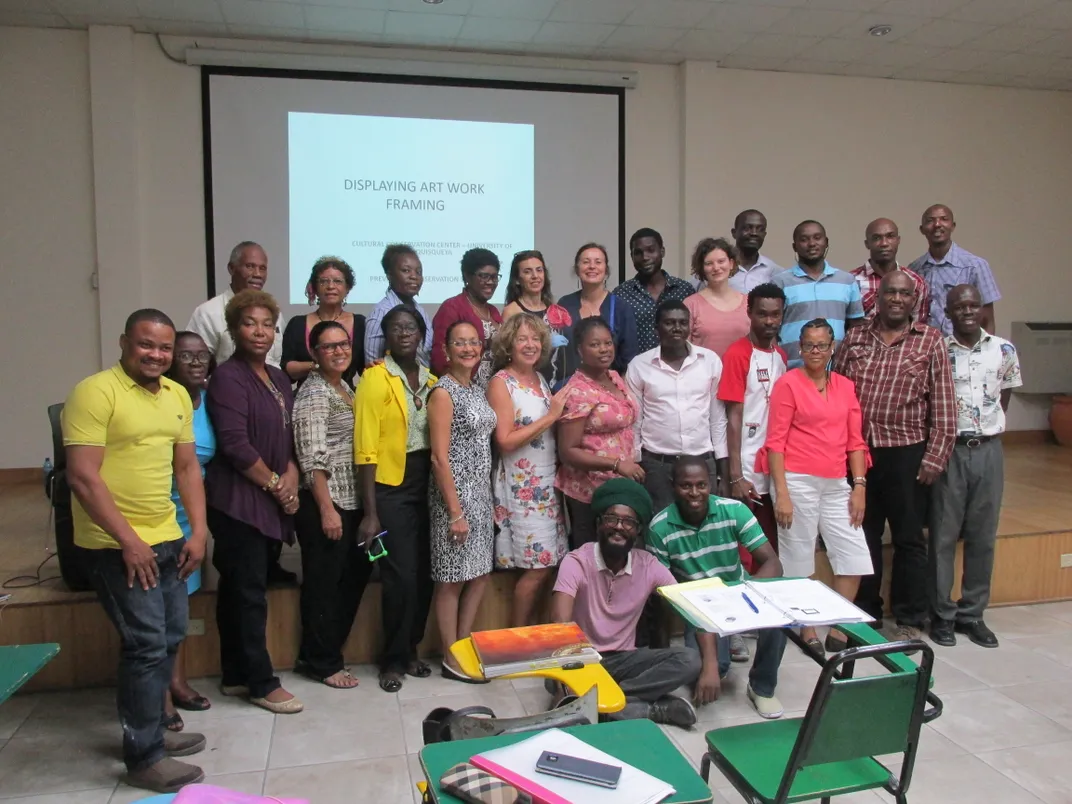
So, where do we now stand a decade after the earthquake?
Haiti’s overall recovery has been long and hard. Much of the billions of dollars in promised internationally aid never arrived. There was no large-scale construction of new homes, nor repair of damaged homes and institutions, no new roads, and only some replacement of infrastructure. It took years to just clean up the 10 million cubic meters of rubble—the equivalent of filling up almost 100 sports stadiums. Though there was a peaceful transition of presidential power from Rene Preval to Michel Martelly, there were difficulties with the legislature and local civic authorities. Following the controversial election of a new president, the country has experienced considerable protest and unrest. Economic stability and daily life for millions remains a challenge.
On the cultural front, artists and advocates have endured and made substantial progress. The Quisqueya University Cultural Conservation Center employed Smithsonian- and Yale-trained conservators Franck Louissaint and Jean Menard Derenoncourt to restore paintings and provide preventative conservation training to those in public and private galleries. The Center, led by Jean-Julien, has also organized cultural activities to increase public awareness of cultural conservation and has aided other organizations in fundraising.
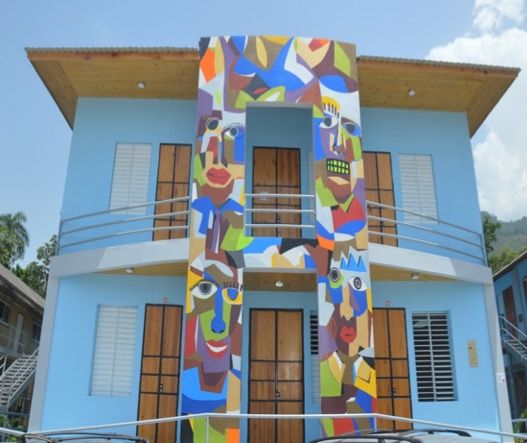
The Nader Gallery recovered more than 14,000 of its paintings and Smithsonian-trained Hugues Berthin has treated some 2,000 of them. Tourism has suffered given instability, thus art sales for this and other commercial galleries in Haiti have slumped. But creativity continues both in-country and beyond. The gallery has promoted both iconic Haitian masters as well as new artists and has mounted exhibitions in Haiti, Paris and Athens. It is currently planning for the 2020 Sydney Biennale and a Biennale in Haiti for 2021. Perhaps most significantly, the gallery established the Fondation Marie et Georges S. Nader with a collection of 863 paintings and art objects selected carefully by family members and art historian Gerald Alexis. The selection includes museum quality pieces created by both well-known and lesser known Haitian artists over the last century and represents the evolution of Haitian art. The goal is to exhibit the collection and also make it the foundation of a new public art museum.
MUPANAH, the national history museum, has engaged two of the conservators who trained with the Haiti Cultural Recovery Project to help manage and conserve its collections. The National Archives improved its 19th-century collection and is seeking support for new facilities. Holy Trinity Episcopal Cathedral is housing the remnants of three surviving larger-than-life murals that decorated its walls, and plan reconstruction for the future. Its boys’ choir has continued to perform over the years, including for tours of the U.S. and annual performances at the Smithsonian.
Le Centre d’Art has made enormous progress. Founded in 1944, Centre d’Art was the historical leader in recognition of Haiti’s artists and the promulgation of their art internationally, starting with seminal acquisitions by New York’s Museum of Modern Art in the 1950s. The collections of Centre d’Art consisting of more than 5,000 Haitian paintings, drawings, iron sculptures and other works and thousands of archival documents were severely compromised by the 2010 earthquake and initially treated by the Haiti Cultural Recovery Project. Ever since, the collection has been conserved, rehoused and studied, thanks to support from L’Ecole du Louvre, the William Talbott Foundation, Open Society Foundations and FOKAL. Most recently, the Centre d’Art joined the Louvre, the National Gallery of Art, Tate Modern and others in receiving prestigious recognition and substantial support from the Bank of America Art Conservation Project—enabling it to do more sophisticated restoration and conservation work in collaboration with the Smithsonian. It was an honor for me to attend the awards ceremony hosted at MOMA by Glenn Lowery and Bank of America’s Rena Desisto, and to stand with Centre board chair Axelle Liautaud and members Michelle Pierre-Louis and Lorraine Mangones in front of a Hector Hyppolite painting exhibited in the museum’s gallery.
Despite the destruction of its main building, the Centre has over the years produced exhibitions, held instructional programs and classes, and served as a meeting place for and supporter of Haitian artists. Centre d’Art recently purchased a historical, 1920s gingerbread-style mansion—Maison Larsen, to serve as a venue for its collections, exhibitions and programs. Support for the $800,000 purchase comes from the Fondation Daniel et Nina Carasso and Fondation de France.
A good deal of restorative work is needed to make this marvelous building operational, and funds for that are being raised.
Finally, the Haiti cultural humanitarian effort had great consequences beyond its shores. When Superstorm Sandy hit in 2012, the Smithsonian responded with many of the same partners that had mobilized for Haiti, and aided galleries, collections and museums in New York. This led to the Smithsonian partnering with FEMA to lead the Heritage Emergency National Task Force, which has since responded to saving cultural items from flooding in Texas, South Carolina and Nebraska, and from hurricanes in Puerto Rico and the U.S. Virgin Islands. The Smithsonian formally established the Cultural Rescue Initiative with Wegener as director, coordinating the work of numerous conservators, collections managers, and experts from divisions across the Institution, and gaining federal appropriations and support from the Mellon Foundation, Bank of America, the State Department and many others. The Haiti effort provided a model of how U.S. government agencies and cultural organizations could collaborate to save heritage in disaster and conflict situations. That is now enshrined in the Preserve and Protect International Cultural Property Act, and the U.S. government, multi-agency Cultural Heritage Coordinating Committee. The Smithsonian, particularly its Museum Conservation Institute (MCI), works closely with the FBI and the Department of Homeland Security on training investigators to prevent the looting and trafficking of cultural treasures.
MCI has taken the lead in training hundreds of Iraqis in cultural conservation at the Iraqi Institute for the Conservation of Antiquities and Heritage in Erbil to reverse destruction by ISIS and others. Currently, the Smithsonian is working with Iraqi partners to stabilize the ancient Assyrian archaeological site of Nimrud and with the Louvre and Aliph Foundation support to safeguard and restore the Mosul Museum—both of which were severely damaged and looted by ISIS.
The Smithsonian has also worked in areas of Syria, Mali and Egypt to safeguard cultural heritage in light of conflict and terrorism, and in Nepal following a cultural devastating earthquake in the Katmandu Valley. Working with the University of Pennsylvania Cultural Heritage Center and others, the Smithsonian has engaged in research projects to better understand and respond to cultural destruction, and with ICCROM and the Prince Claus Fund, helps train professional cultural first responders from around the world.
Working with the Department of Defense and Defense Intelligence Agency, the Smithsonian, along with partners, helps encourage knowledge of U.S. law and international treaty obligations with regard to the protection of cultural heritage. And recently, as Haitian leader Patrick Delatour perhaps envisioned, the Smithsonian signed an agreement with the U.S. Army to train a new generation of Monuments Men and Women capable of addressing the complex issues of cultural preservation in today’s world. In short then, the Haitian experience provided the means for the Smithsonian, joining with many, many partners, to do a better job of safeguarding the world’s threatened human heritage.
:focal(228x177:229x178)/https://tf-cmsv2-smithsonianmag-media.s3.amazonaws.com/filer/5e/73/5e73e327-8666-48bd-864f-abc3c38abcdd/haiti-earthquake-mobile.jpg)
:focal(742x295:743x296)/https://tf-cmsv2-smithsonianmag-media.s3.amazonaws.com/filer/ed/6c/ed6c8ca7-a427-4db0-818c-c8a93e8422ec/longform-haiti-opener.jpg)
/https://tf-cmsv2-smithsonianmag-media.s3.amazonaws.com/accounts/headshot/kurin.png)

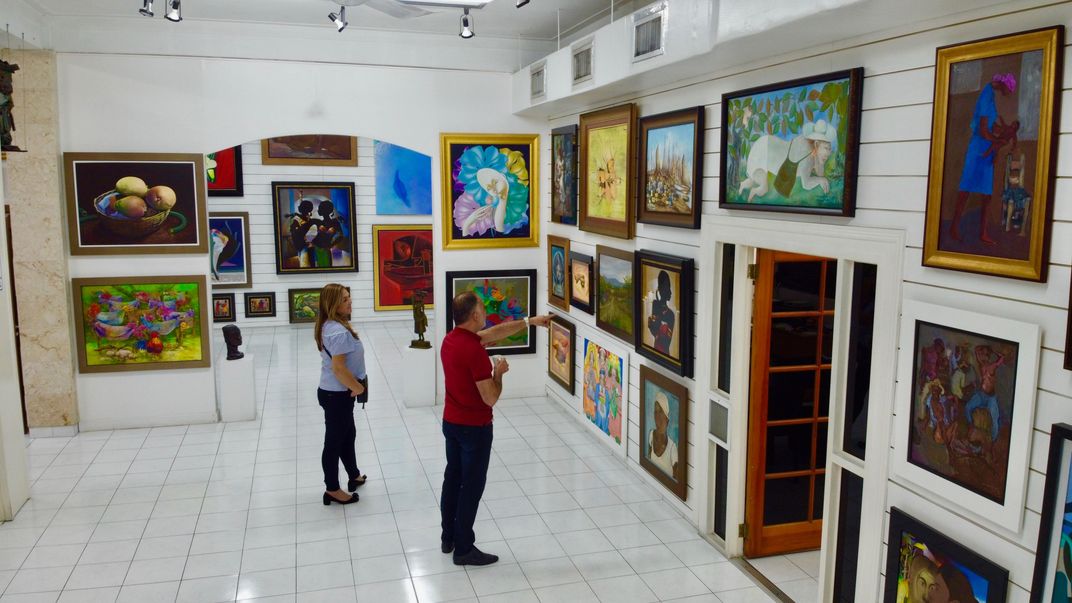
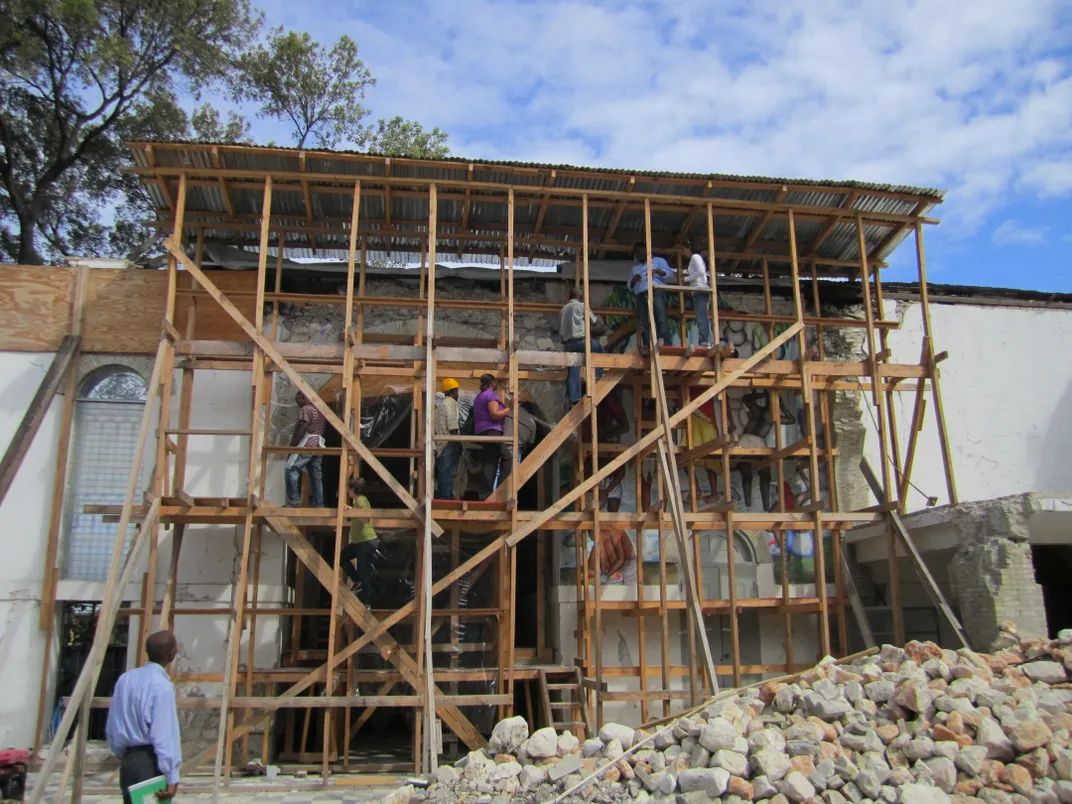
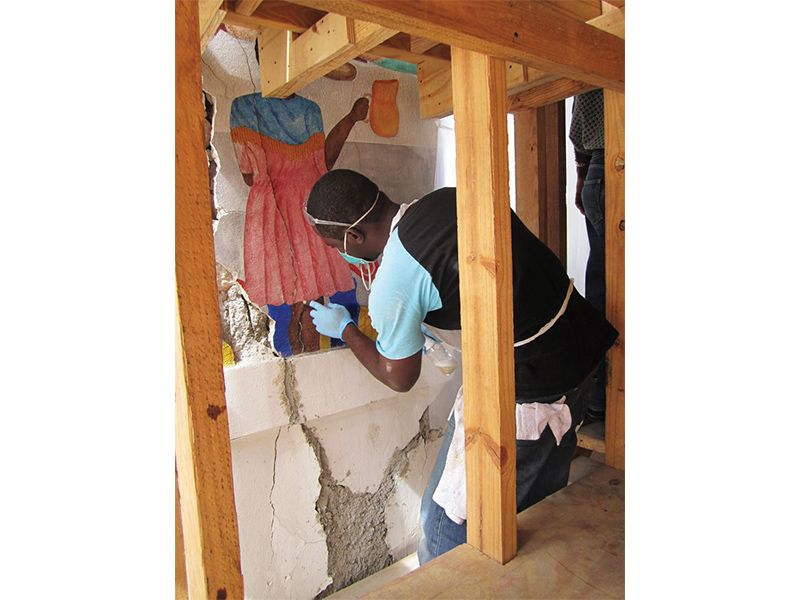
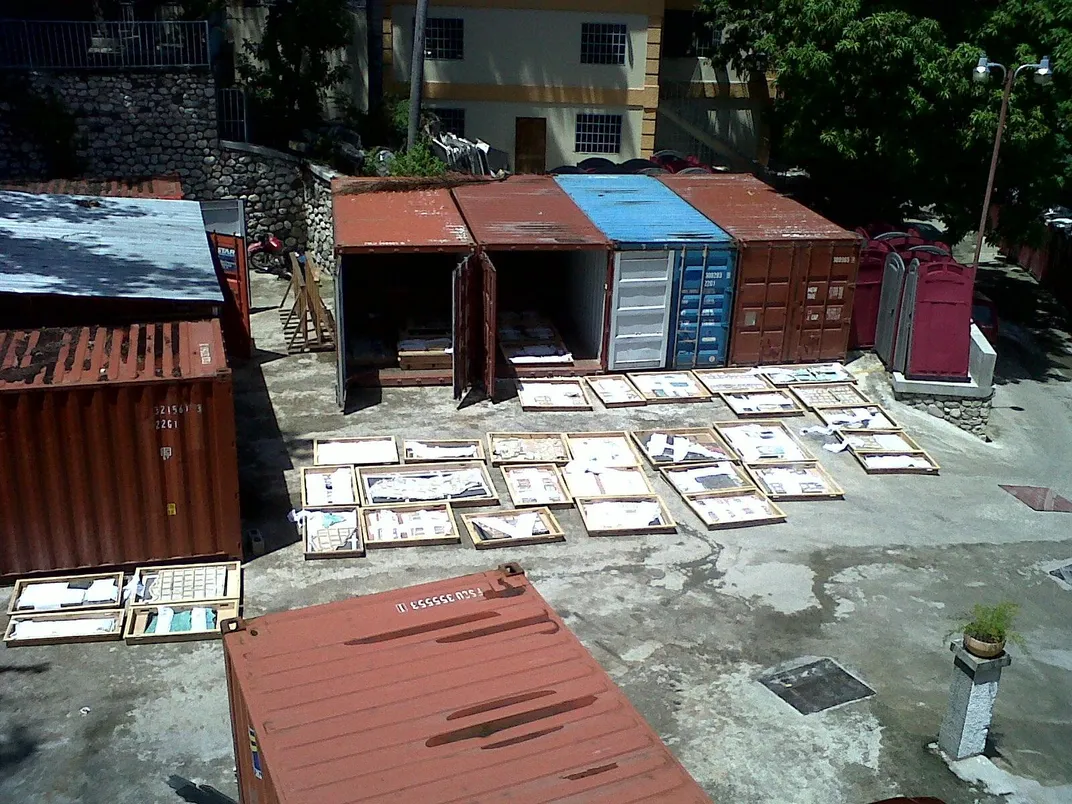
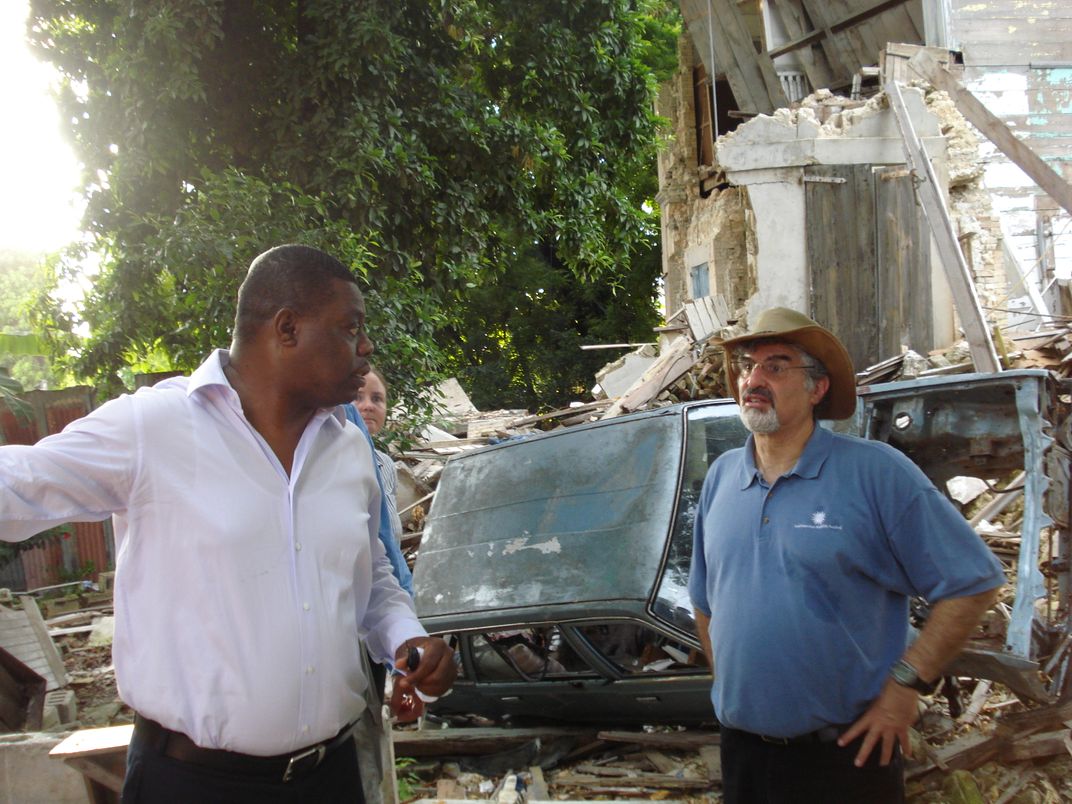
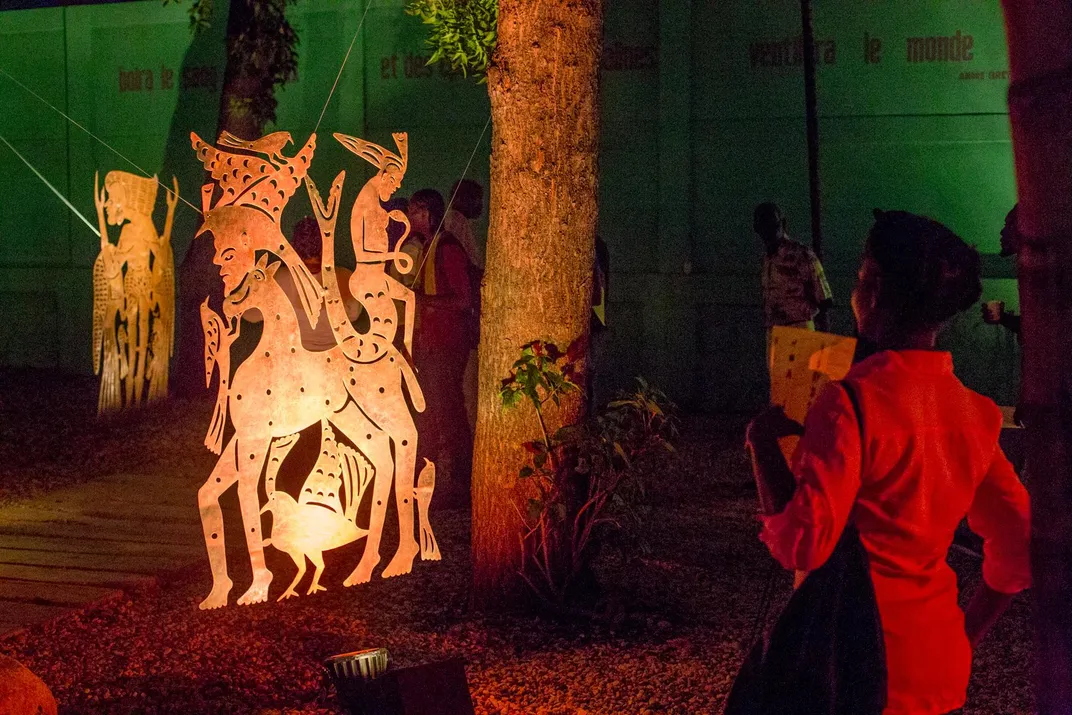
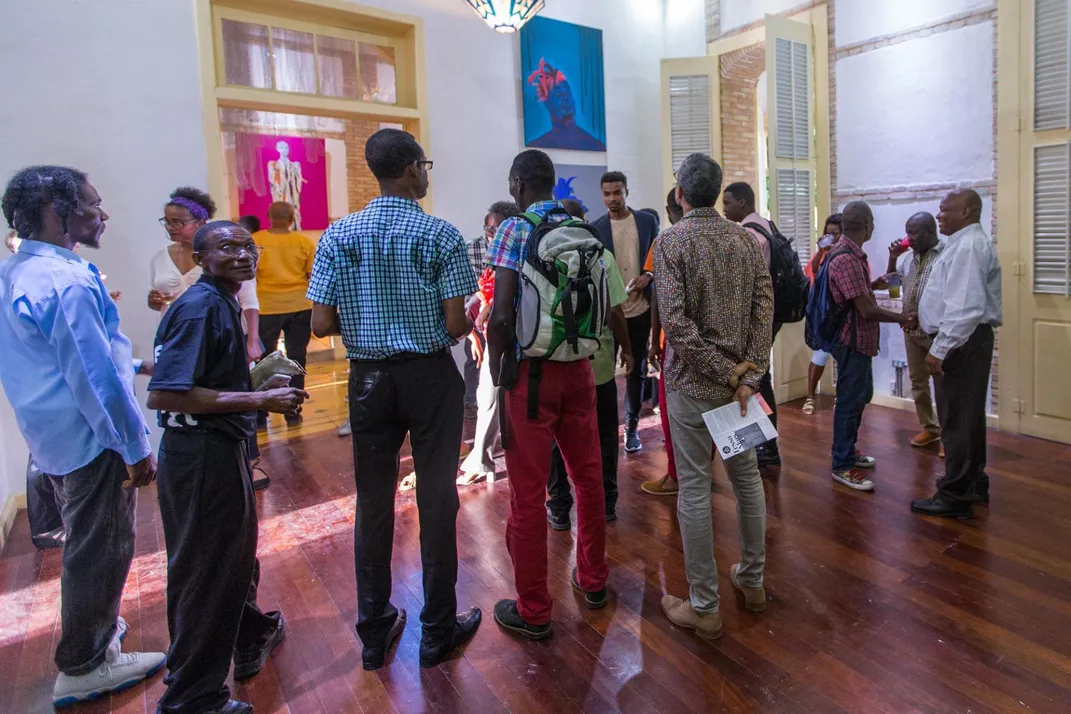
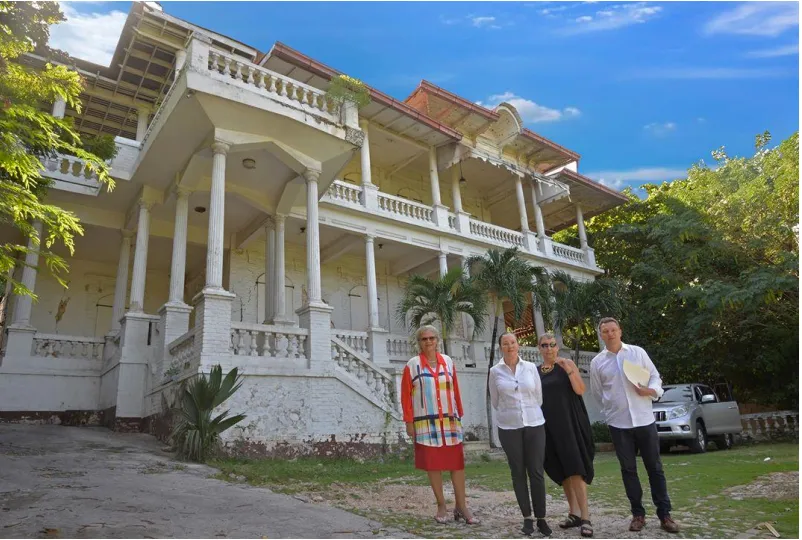
/https://tf-cmsv2-smithsonianmag-media.s3.amazonaws.com/accounts/headshot/kurin.png)